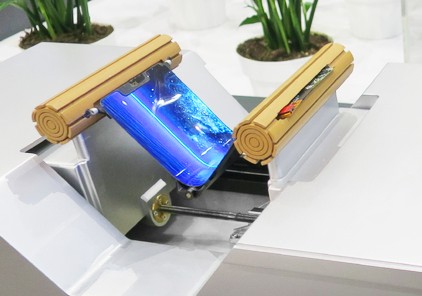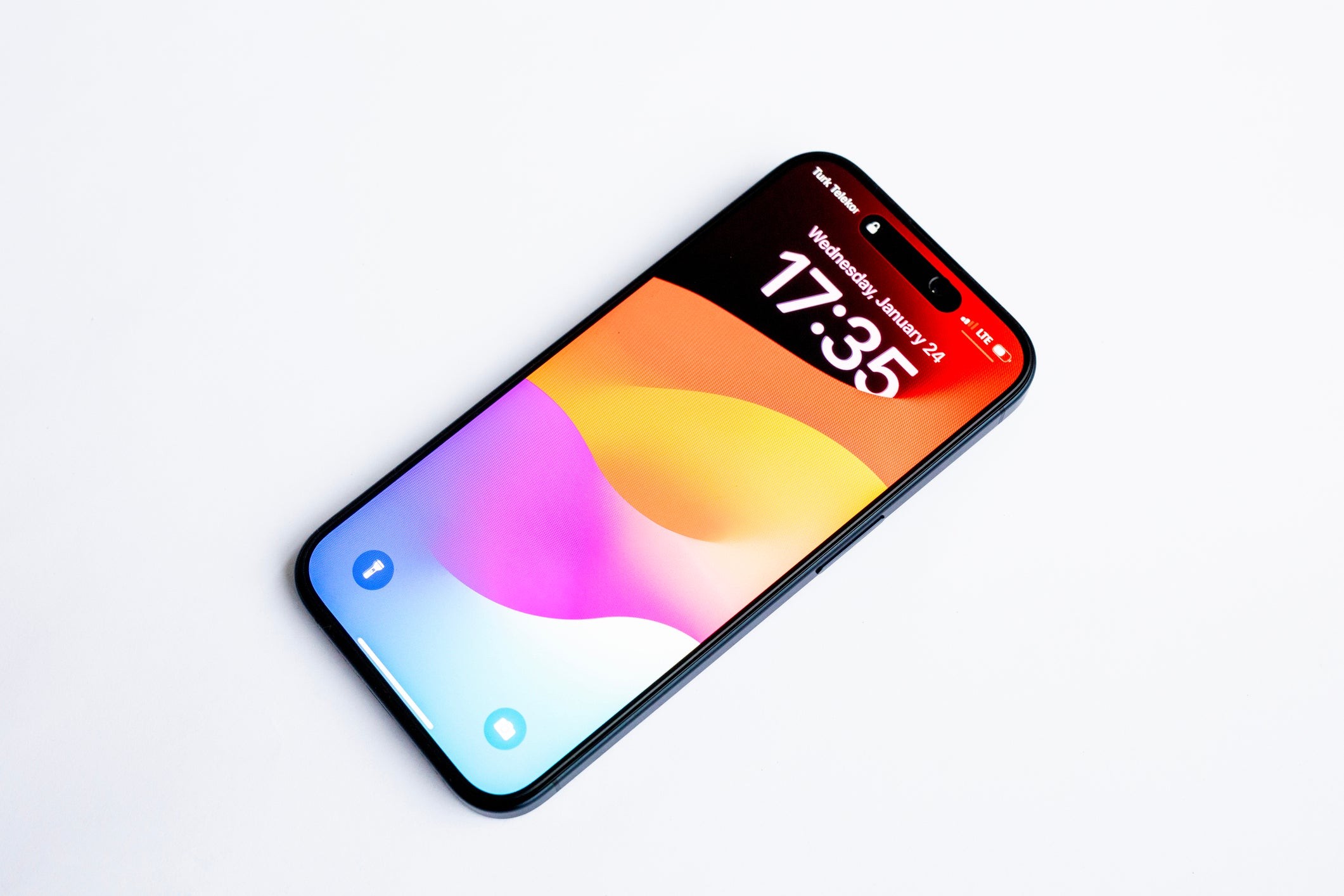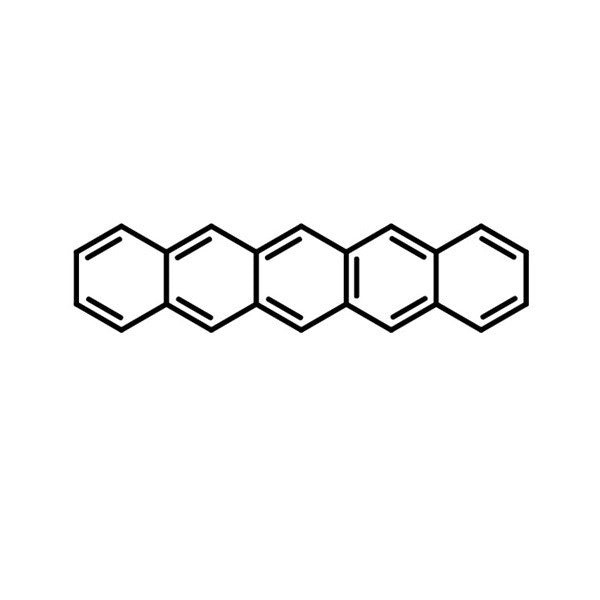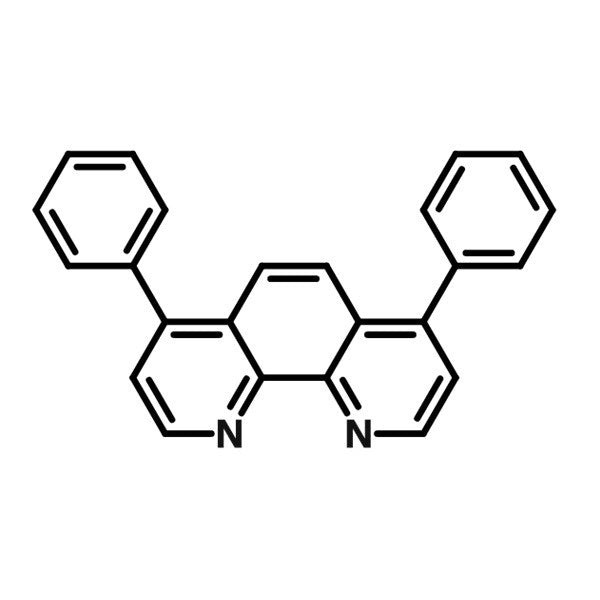What Is Oled? OLED, or Organic Light Emitting Diode, is a revolutionary display technology that offers superior image quality and energy efficiency compared to traditional LCDs. At WHAT.EDU.VN, we’re dedicated to providing you with clear, concise answers to all your questions, including everything you need to know about OLED technology and its applications. Explore the world of OLED displays, delve into the science behind them, and understand why they’re becoming increasingly popular. Learn about OLED technology advantages, display technology innovations and future display technologies.
1. OLED Definition: What Exactly Is OLED Technology?
OLED (Organic Light-Emitting Diode) is a display technology where the emissive electroluminescent layer is a film of organic compound that emits light in response to an electric current. This organic layer is positioned between two electrodes. When an electrical current is applied, these organic materials emit light, creating the image you see. Unlike LCDs, OLEDs don’t require a backlight, as each pixel generates its own light. This allows for deeper blacks, higher contrast ratios, and wider viewing angles.
1.1 The Basic Structure of OLED
Understanding the anatomy of an OLED helps to appreciate its functionality. Here’s a breakdown of the primary components:
- Substrate: The base material, often glass or plastic, that supports the entire structure.
- Anode: A positive electrode that injects holes (positive charge carriers) into the organic layer.
- Organic Layers: This is where the magic happens. These layers consist of various organic molecules, including:
- Hole Injection Layer (HIL): Facilitates the injection of holes from the anode.
- Hole Transport Layer (HTL): Transports holes to the emissive layer.
- Emissive Layer (EML): The layer where light is produced when holes and electrons recombine.
- Electron Transport Layer (ETL): Transports electrons to the emissive layer.
- Electron Injection Layer (EIL): Facilitates the injection of electrons from the cathode.
- Cathode: A negative electrode that injects electrons into the organic layer.
1.2 How OLEDs Work
The process of light emission in an OLED involves several steps:
- Charge Injection: When voltage is applied across the OLED, the anode injects holes and the cathode injects electrons into the organic layers.
- Charge Transport: The injected holes and electrons are transported through the respective transport layers towards the emissive layer.
- Recombination: In the emissive layer, holes and electrons meet and recombine, forming excitons (electron-hole pairs).
- Light Emission: These excitons then decay, releasing energy in the form of light. The color of the emitted light depends on the type of organic material used in the emissive layer.
1.3 AMOLED vs. PMOLED: Understanding the Differences
OLEDs come in two main types: Active Matrix OLED (AMOLED) and Passive Matrix OLED (PMOLED). Each type has unique characteristics that make it suitable for different applications.
| Feature | AMOLED | PMOLED |
|---|---|---|
| Control | Active matrix with a thin-film transistor (TFT) backplane | Passive matrix with external circuitry |
| Resolution | Higher resolution and larger displays | Lower resolution and smaller displays |
| Power Consumption | Lower power consumption, especially for displays with large black areas | Higher power consumption, as each line needs to be powered sequentially |
| Cost | More expensive to manufacture | Less expensive to manufacture |
| Applications | Smartphones, TVs, laptops | Wearable devices, small displays |




AMOLED (Active Matrix OLED)
AMOLED displays use a thin-film transistor (TFT) backplane to control each pixel individually. This allows for higher resolutions, faster response times, and lower power consumption, especially when displaying content with large areas of black (since the pixels can be turned off completely). AMOLED displays are commonly found in smartphones, TVs, and other high-end devices.
PMOLED (Passive Matrix OLED)
PMOLED displays use a simpler passive matrix addressing scheme, where external circuitry controls each row and column of pixels. This makes them cheaper to manufacture, but they are less efficient and typically limited to smaller displays with lower resolutions. PMOLEDs are often used in wearable devices, such as smartwatches and fitness trackers, as well as small information displays.
2. The Advantages of OLED Displays
OLED technology offers several significant advantages over traditional display technologies like LCD. These benefits contribute to a superior viewing experience and greater design flexibility.
2.1 Superior Image Quality
One of the most notable advantages of OLED displays is their exceptional image quality.
- High Contrast Ratio: OLEDs can achieve true blacks by completely turning off individual pixels, resulting in an infinite contrast ratio. This makes dark scenes in movies and games appear incredibly realistic.
- Vibrant Colors: OLEDs produce rich, vibrant colors with a wide color gamut, making images more lifelike and engaging.
- Wide Viewing Angles: Unlike LCDs, OLED displays maintain consistent color and brightness even when viewed from extreme angles, ensuring a great viewing experience for everyone in the room.
- Fast Response Times: OLEDs have incredibly fast response times, resulting in smooth motion and reduced blurring, which is especially beneficial for gaming and fast-paced video content.
2.2 Energy Efficiency
OLED displays can be more energy-efficient than LCDs, particularly when displaying content with dark backgrounds. Because OLED pixels emit their own light, pixels that are displaying black can be turned off completely, saving energy. This is especially noticeable in AMOLED displays, which control each pixel individually.
2.3 Flexibility and Design
OLED technology’s unique characteristics make it ideal for creative and innovative display designs.
- Thin and Lightweight: OLEDs can be made incredibly thin and lightweight, allowing for sleek and stylish device designs.
- Flexible Displays: OLEDs can be manufactured on flexible substrates, enabling the creation of curved, foldable, and rollable displays. This opens up new possibilities for device form factors and user experiences.
- Transparent Displays: OLEDs can also be made transparent, which is useful for augmented reality applications, heads-up displays, and innovative window designs.
2.4 Durability and Reliability
While early OLED displays were known to degrade faster than LCDs, modern OLED technology has significantly improved in terms of durability and lifespan. With advancements in materials and manufacturing processes, OLED displays can now last for tens of thousands of hours before experiencing noticeable degradation.
3. Common Applications of OLED Technology
OLED technology is revolutionizing various industries, from consumer electronics to automotive and beyond. Here are some of the most common applications of OLED displays:
3.1 Televisions
OLED TVs offer unparalleled picture quality, with deep blacks, vibrant colors, and wide viewing angles. They are a popular choice for home theater enthusiasts who demand the best possible viewing experience. Major TV manufacturers like LG, Sony, and Samsung offer a range of OLED TVs in various sizes and resolutions.
3.2 Smartphones
OLED displays have become standard in high-end smartphones, offering excellent image quality, energy efficiency, and design flexibility. The vibrant colors and deep blacks of OLED displays make photos, videos, and games look stunning on smartphone screens. Apple’s flagship iPhones have featured OLED displays since 2017.
3.3 Wearable Devices
OLED displays are also widely used in wearable devices like smartwatches and fitness trackers. Their low power consumption and compact size make them ideal for these devices, which need to be both energy-efficient and comfortable to wear.
3.4 Laptops and Tablets
OLED displays are increasingly being used in laptops and tablets, offering improved image quality and energy efficiency compared to traditional LCDs. These displays provide a more immersive viewing experience for work, entertainment, and creative tasks.
3.5 Automotive Displays
OLED technology is making its way into the automotive industry, with manufacturers using OLED displays for instrument panels, infotainment systems, and rearview mirrors. The wide viewing angles and high contrast ratios of OLED displays enhance visibility and safety for drivers.
4. Future Trends in OLED Technology
OLED technology is constantly evolving, with researchers and manufacturers working on new innovations to further improve performance, reduce costs, and expand applications. Here are some of the key trends shaping the future of OLED technology:
4.1 Foldable and Rollable Displays
Foldable and rollable OLED displays are becoming increasingly popular, offering new possibilities for device design and user experience. These displays can be folded or rolled up when not in use, making devices more compact and portable. Foldable smartphones and tablets are already available on the market, and rollable TVs are expected to become more common in the coming years.
4.2 Transparent Displays
Transparent OLED displays are another exciting area of development, with potential applications in augmented reality, smart windows, and heads-up displays. These displays allow users to see through the screen while still displaying information, creating a unique and immersive experience.
4.3 Improved Efficiency and Lifespan
Researchers are continuously working on improving the efficiency and lifespan of OLED materials and devices. New organic materials are being developed that emit more light with less energy, and new manufacturing processes are being implemented to reduce degradation and extend the lifespan of OLED displays.
4.4 Quantum Dot OLED (QD-OLED)
QD-OLED is a hybrid display technology that combines the best features of OLED and quantum dot technologies. QD-OLED displays use a blue OLED emitter combined with quantum dot color converters to produce more vibrant and accurate colors, as well as improved brightness and contrast.
5. What are OLED Materials?
OLED materials are the organic compounds that form the emissive layer in OLED displays. These materials are crucial for determining the color, efficiency, and lifespan of the display. Here’s a deeper dive into the types of materials used and their roles:
5.1 Types of OLED Materials
- Small Molecule OLEDs (SM-OLEDs): These are typically used in vacuum thermal evaporation processes to create uniform thin films.
- Polymer OLEDs (P-OLEDs): These can be solution-processed, making them suitable for ink-jet printing and roll-to-roll manufacturing.
5.2 Key Material Components
- Emitter Materials: These are the organic compounds that emit light when excited by electrical current. Different emitters are used to produce red, green, and blue light, which are then combined to create a full-color display.
- Transport Layers:
- Hole Transport Materials (HTM): These materials facilitate the movement of positive charges (holes) from the anode to the emissive layer.
- Electron Transport Materials (ETM): These materials facilitate the movement of negative charges (electrons) from the cathode to the emissive layer.
- Blocking Layers: These layers prevent the unwanted diffusion of holes or electrons, improving efficiency and preventing quenching of the emitter.
- Dopants: Small amounts of dopants are added to the emissive layer to enhance the color purity and efficiency of the OLED.
5.3 Examples of OLED Materials
The chemical structure and properties of these materials are optimized for efficient light emission and charge transport.
6. OLED Emitting Generations
OLED technology has seen several generations of emitter materials, each with improved efficiency and performance.
6.1 First-Generation: Fluorescence Emitters
- These were the earliest OLED emitters, characterized by relatively simple molecular structures.
- Efficiency: Limited to around 25% internal quantum efficiency.
- Advantages: Easy to produce and relatively stable.
- Disadvantages: Low efficiency compared to later generations.
6.2 Second-Generation: Phosphorescence Emitters
- These emitters incorporate heavy metals like iridium to enhance efficiency.
- Efficiency: Can achieve up to 100% internal quantum efficiency.
- Advantages: High efficiency, particularly for red and green emitters.
- Disadvantages: Blue phosphorescent emitters have been challenging to develop.
6.3 Third-Generation: Thermally Activated Delayed Fluorescence (TADF)
- TADF materials utilize a mechanism that allows them to harvest both singlet and triplet excitons, increasing efficiency.
- Efficiency: Potentially high efficiency, bridging the gap between fluorescence and phosphorescence.
- Advantages: Does not require heavy metals, offering a more sustainable option.
- Disadvantages: Still under development, with challenges in achieving long-term stability.
6.4 Fourth-Generation: Hyperfluorescence
- Hyperfluorescence combines TADF materials with highly efficient fluorescent emitters.
- Efficiency: Can achieve high efficiency and color purity.
- Advantages: Offers the potential for high-performance displays without the use of rare or heavy metals.
- Disadvantages: Complex material design and device architecture.
7. Challenges and Limitations of OLED Technology
Despite its many advantages, OLED technology still faces certain challenges and limitations.
7.1 Burn-In
OLED displays are susceptible to burn-in, which occurs when static images are displayed for extended periods of time, causing certain pixels to degrade faster than others. This can result in permanent image retention on the screen. However, modern OLED displays incorporate technologies like pixel shifting and screen savers to mitigate the risk of burn-in.
7.2 Cost
OLED displays are generally more expensive to manufacture than LCDs, which can make them less accessible to budget-conscious consumers. However, as production volumes increase and manufacturing processes improve, the cost of OLED displays is expected to decrease over time.
7.3 Water and Air Sensitivity
OLED materials are susceptible to degradation from exposure to moisture and oxygen. This requires careful encapsulation and sealing to protect the organic layers from the environment.
7.4 Blue Emitter Lifetime
Blue OLED emitters have traditionally had shorter lifespans compared to red and green emitters. This can lead to color imbalance and reduced overall display lifespan. However, ongoing research is focused on developing more stable and efficient blue emitter materials.
8. Testing an OLED Device
Testing an OLED device involves simultaneously measuring its electrical and optical properties to generate a current-voltage-luminance (IVL) curve. This allows the power efficiency and brightness to be characterised. Lifetime testing is also important to ascertain how quickly an OLED will degrade over extended use.
9. FAQs About OLED Technology
9.1 What is the difference between OLED and QLED?
OLED (Organic Light-Emitting Diode) and QLED (Quantum Dot LED) are both display technologies offering superior image quality compared to traditional LCDs, but they differ in how they produce light and color.
| Feature | OLED (Organic Light-Emitting Diode) | QLED (Quantum Dot LED) |
|---|---|---|
| Light Source | Organic compounds emit light when an electric current is applied. | LED backlight shines through a quantum dot filter. |
| Black Levels | True blacks (pixels can be turned off completely). | Near-blacks (LED backlight can be dimmed but not completely turned off). |
| Contrast Ratio | Infinite contrast ratio. | High contrast ratio, but not as high as OLED. |
| Viewing Angles | Wide viewing angles. | Wide viewing angles. |
| Color Accuracy | Excellent color accuracy. | Excellent color accuracy, enhanced by quantum dots. |
| Response Time | Very fast response time. | Fast response time. |
| Manufacturing | More complex and expensive to manufacture. | Less complex and less expensive to manufacture. |
| Burn-In Risk | Some risk of burn-in with static images displayed for long periods. | No risk of burn-in. |
| Energy Efficiency | Can be more energy-efficient, especially with dark content. | Generally energy-efficient. |
| Lifespan | Can be shorter than QLED, but improving. | Generally longer lifespan. |
9.2 Are OLEDs better than LEDs?
Whether OLED is “better” than LED depends on the specific application and priorities. OLED excels in contrast, black levels, viewing angles, and response time, making it ideal for high-end TVs and smartphones where image quality is paramount. LED, particularly with quantum dots (QLED), offers advantages in brightness, energy efficiency, and lifespan, making it suitable for a wider range of applications where cost and durability are more critical.
9.3 How long do OLED TVs last?
The lifespan of an OLED TV depends on usage patterns and display settings. However, modern OLED TVs are designed to last for tens of thousands of hours before experiencing noticeable degradation. Most users can expect their OLED TV to last for at least 5-8 years with typical usage.
9.4 Is OLED good for gaming?
Yes, OLED displays are excellent for gaming due to their fast response times, low input lag, and high contrast ratios. These features result in smooth motion, reduced blurring, and immersive visuals, enhancing the gaming experience.
9.5 What are the disadvantages of OLED?
Despite the numerous advantages of OLED displays, there are some disadvantages to consider. OLEDs can be more expensive to manufacture than LCDs, which can translate to higher prices for consumers. OLEDs are also susceptible to burn-in, which can occur when static images are displayed for extended periods of time. While modern OLED displays incorporate technologies to mitigate burn-in, it is still a concern for some users.
9.6 What is MicroLED?
MicroLED is a next-generation display technology that uses microscopic LEDs to create images. MicroLED displays offer several advantages over OLED, including higher brightness, longer lifespan, and better energy efficiency. However, MicroLED technology is still in its early stages of development, and manufacturing costs are currently very high.
9.7 How do I care for my OLED screen?
To maximize the lifespan and performance of your OLED screen, it is important to follow a few simple care tips. Avoid displaying static images for extended periods of time, and enable features like pixel shifting and screen savers to prevent burn-in. Clean your OLED screen regularly with a soft, dry cloth to remove dust and fingerprints.
9.8 Can OLED displays be recycled?
Yes, OLED displays can be recycled, but the process is complex and requires specialized equipment. It is important to dispose of your old OLED displays responsibly by taking them to a certified e-waste recycling center.
9.9 Are OLED displays environmentally friendly?
OLED displays can be more environmentally friendly than LCDs due to their lower power consumption and the absence of harmful materials like mercury. However, the manufacturing process for OLED displays still requires the use of certain chemicals and resources. Ongoing research is focused on developing more sustainable materials and manufacturing processes for OLED displays.
9.10 Where can I learn more about OLED technology?
You can learn more about OLED technology by visiting websites like WHAT.EDU.VN, which offers a wealth of information on various display technologies, including OLED. You can also consult industry publications, research papers, and educational resources to deepen your understanding of OLED technology.
10. Got Questions? Ask WHAT.EDU.VN!
Do you have more questions about OLED technology or any other topic? Don’t hesitate to ask! At WHAT.EDU.VN, we’re committed to providing you with fast, accurate, and free answers to all your questions. Our platform is designed to connect you with a community of experts and knowledgeable individuals who can help you find the information you need.
We understand the challenges of finding reliable information online, especially when you need answers quickly and without cost. That’s why we’ve created WHAT.EDU.VN as a free and easy-to-use resource for anyone seeking knowledge. Whether you’re a student, a professional, or simply curious about the world around you, we’re here to help.
10.1 How to Ask a Question on WHAT.EDU.VN
Asking a question on WHAT.EDU.VN is simple and straightforward:
- Visit our website: WHAT.EDU.VN
- Type your question into the search bar.
- Browse through existing answers or submit your own question.
- Receive answers from our community of experts.
10.2 Why Choose WHAT.EDU.VN?
- Free Access: Our platform is completely free to use.
- Fast Answers: Get answers to your questions quickly and efficiently.
- Expert Community: Connect with knowledgeable individuals who can provide accurate and reliable information.
- Easy to Use: Our platform is designed to be user-friendly and intuitive.
- Wide Range of Topics: Ask questions about anything and everything.
10.3 Contact Us
If you have any questions or need assistance, please don’t hesitate to contact us:
- Address: 888 Question City Plaza, Seattle, WA 98101, United States
- WhatsApp: +1 (206) 555-7890
- Website: WHAT.EDU.VN
Don’t let your questions go unanswered. Visit what.edu.vn today and start exploring the world of knowledge!
